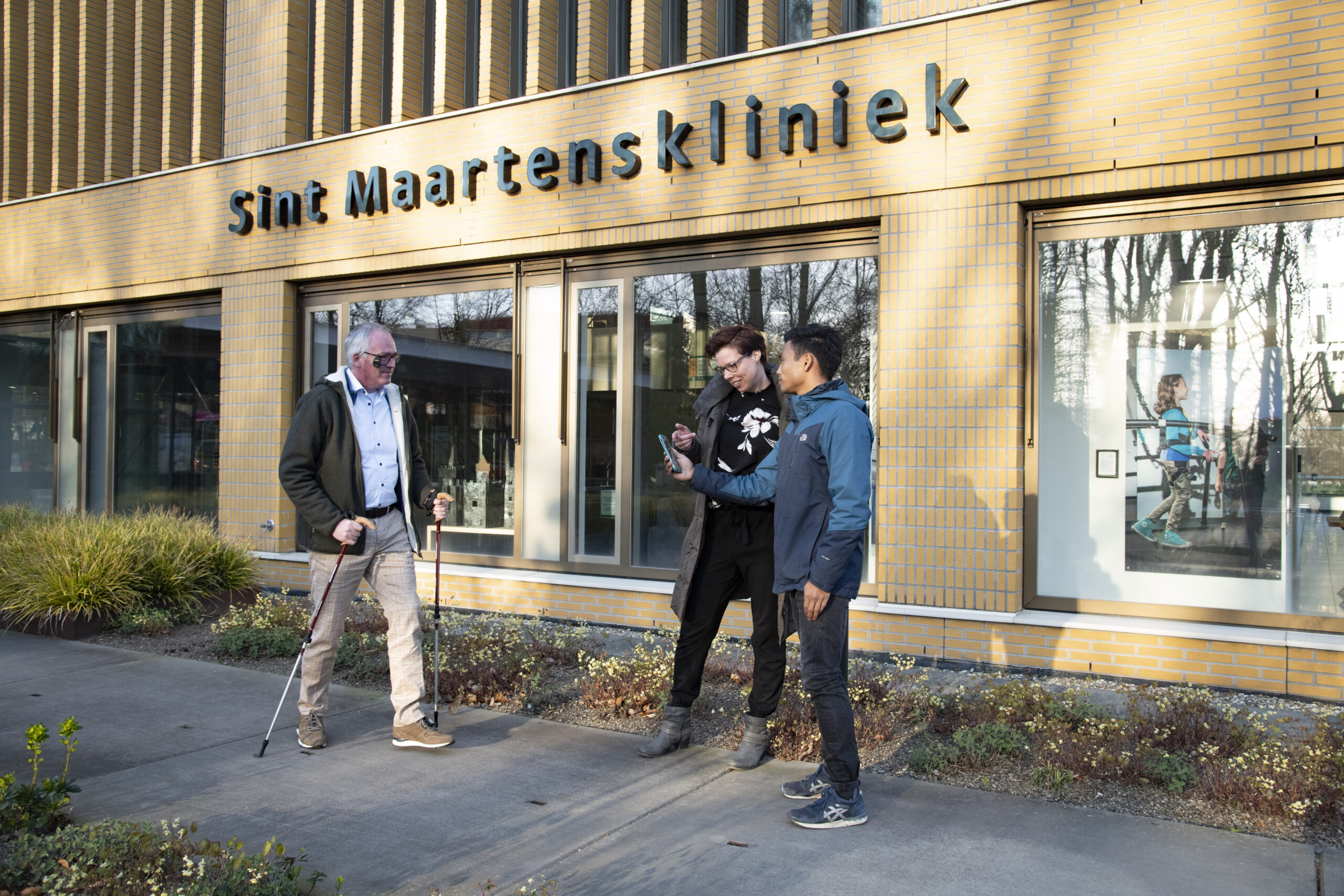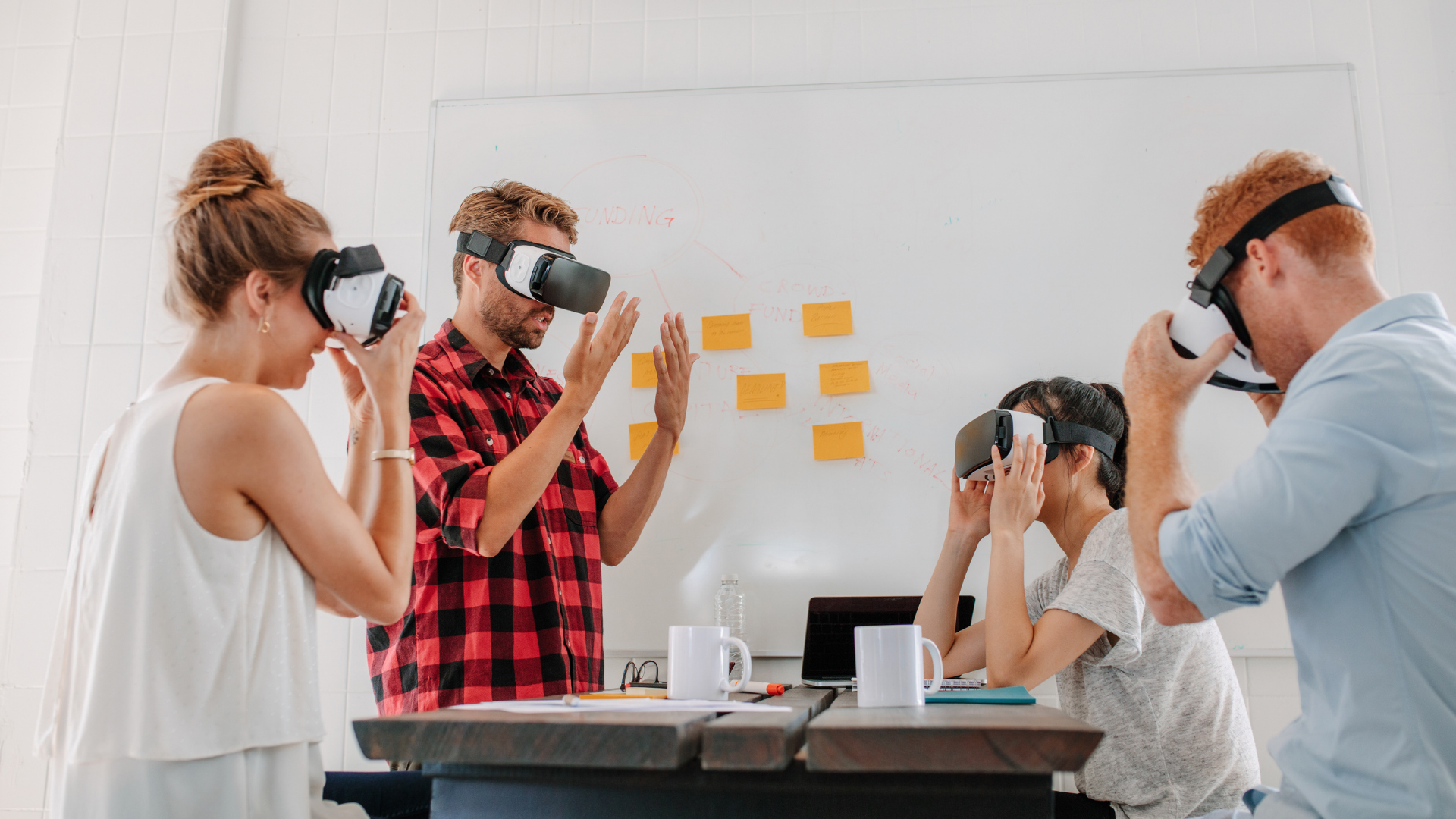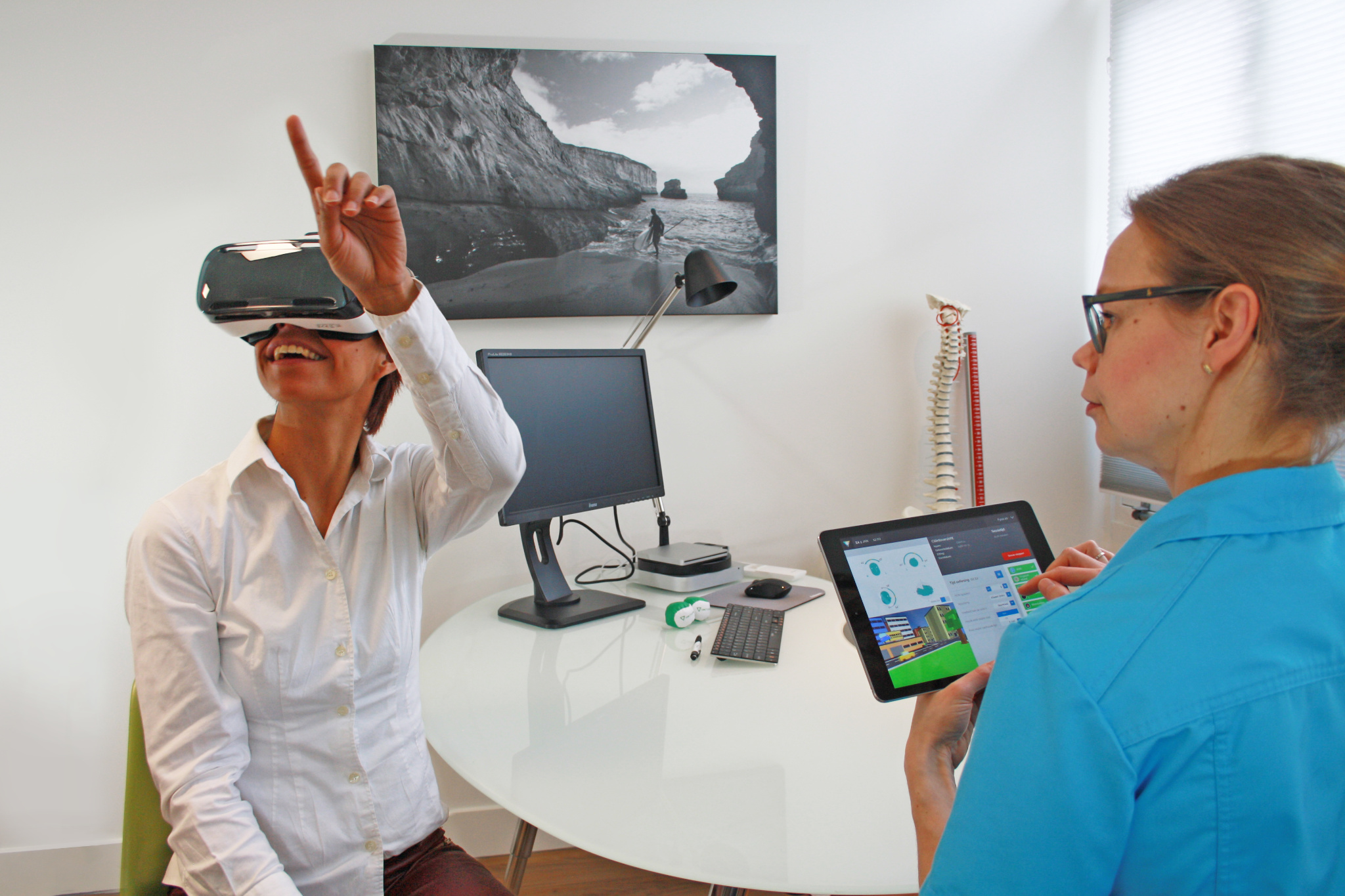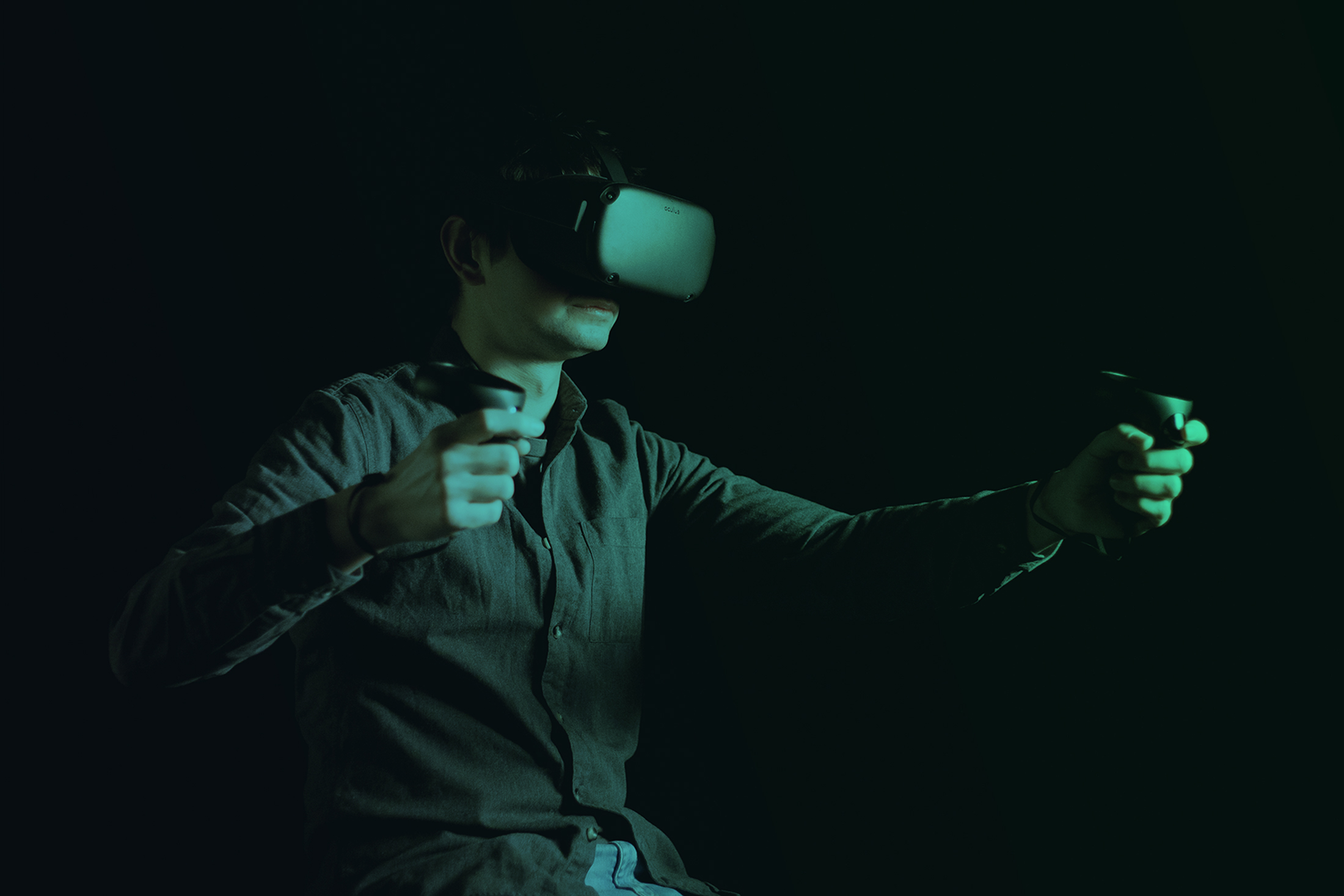Defining and investigating the facilitators and barriers of innovative virtual reality products for rehabilitation
Today we had the pleasure of meeting Iris Rijssemus, who has recently completed a Graduation Internship at the Sint Maartenskliniek. Her final thesis focused on defining and investigating the facilitators and barriers of innovative virtual reality products for rehabilitation.
About the SMK
The Sint Maartenskliniek (SMK) is one of the healthcare providers who are interested in the use of VR for rehabilitation, it is a combined hospital and rehabilitation clinic specialized in postural and movement disorders. Currently, the SMK is part of an international collaboration of organizations called VR4REHAB, subdivided into 8 teams.
Iris Rijssemus carried out an analysis involving the applications produced by the SMK. There are three teams affiliated with the VR4REHAB project: Moving Reality, Trunky XL, and Hands around the world. “Moving Reality is currently developing an AR phone application for the rehabilitation of the lower extremities of stroke patients. Trunky XL focuses on a VR phone application to rehabilitate the trunk and balance of neurological patients suffering from a stroke or spinal cord injury. Finally, Hands around the world is developing a computer VR environment to help children with Cerebral Palsy rehabilitate their upper extremities.”

The interview
We thank you for the important and timely analysis you provided to VR4REHAB. Your market analysis suggests that there are already techniques similar to VR4REHAB, what is striking is that all of the competitors you identified are developed to cover more impairments and a variety of different neurological conditions.
Whilst the VR4REHAB products are tailored to fit a specific patient need. What are the pros and cons of this different approach?
A more tailored approach allows for treatments with a higher specificity, effectivity, and safety which will ensure better patient care. It might also lead to the possibility of shortening the treatment trajectory and thus minimizing the healthcare costs. Another motivator for tailored products are the patients, which are currently focusing more on healthcare providers that can deliver medical care tailored to fit their specific needs. A drawback of the tailored approach is the patient pool, you can treat fewer patients than with a more versatile product. Also, when a healthcare provider delivers treatments for different conditions they will need to have more products. All of which come with their own operating instructions, meaning that the therapists will need to learn how to operate all these different products.
Did you notice any differences in the working method within all the VR4REHAB teams? Does this lead to differences in the results obtained?
Yes, when researching the technology readiness level (TRL), I found differences between the teams as well as between team members. What I saw was that while one team was (mostly) working according to the TRL scheme, another followed different planning. This resulted in me having to estimate the TRL since this team skipped a few steps that they will have to finish at a later point. Differences within a VR4REHAB team were found between the project manager and the researchers, the projects manager stated that the technology was advanced further than that the researchers indicated. Because the teams worked according to different planning and the team members were not on the same page, another researcher might estimate the TRL’s slightly different. But I do not expect a big difference compared to my results.

However, we found out that the VR4REHAB applications have some strong competitors in the market, among the applications produced by SMK, which is the most technologically advanced you have identified? And why?
This is hard for me to estimate since I am not an expert within the VR field, but I would think it is the company Motek Medical. This company developed multiple products which combine more than one VR technology. The products Caren, Grail, M-Gait, Raysen and the C-Mill are all comparable systems using AR and VR in combination with different motor bases, treadmills, sensors, and trunk support. At Motek they are also able to specify a patient’s needs more than some of the other products on the market.

The SMK VR4REHAB products are still at the beginning of the implementation process, to improve their implementation strategy your study has identified facilitators and barriers. Can you explain some of them to us?
The facilitators and barriers were derived from the results of the questionnaire I send out to the SMK rehabilitation therapists. I will show you how I derived these, but keep in mind that there is more information that supports the identified facilitators and barriers.
Rehabilitation therapists stated that they would like an expert clinician present for the first usage period for support and to share personal experiences, as well as excess to E-learning modules and Hands-on workshops. They would also like technical support that can provide help at short notice. Facilitators identified from this information are shared experiences, technological support, and knowledge support.
Rehabilitation therapists also stated that they would like to be kept informed about the technological advancement as well as have the opportunity to provide feedback on clinical aspects of VR products. They are also looking for products that are applicable to a large patient group with an easy and quick setup, with the ability to monitor the progress of a patient while training at home. Barriers identified from this information are communication, complex technology, and technological boundaries.
The results of this study form a great framework for further investigation. Are you willing to continue this research in the future?
It is certainly an interesting topic, and I would like to be able to dive deeper. By not only including therapists but also management in order and find a good way of presenting new technology within healthcare.
